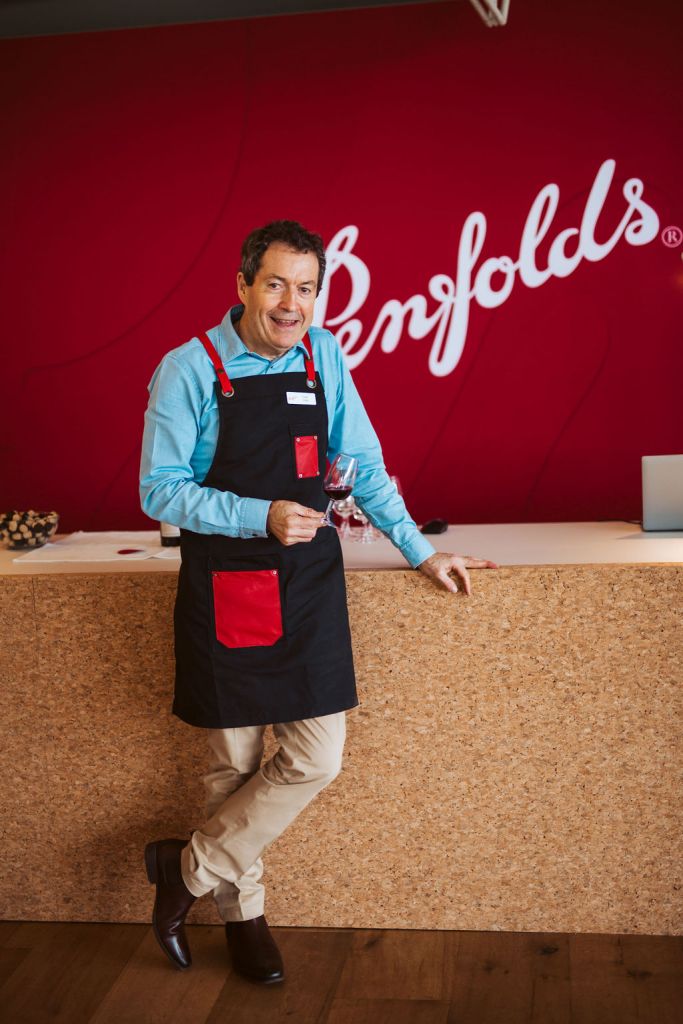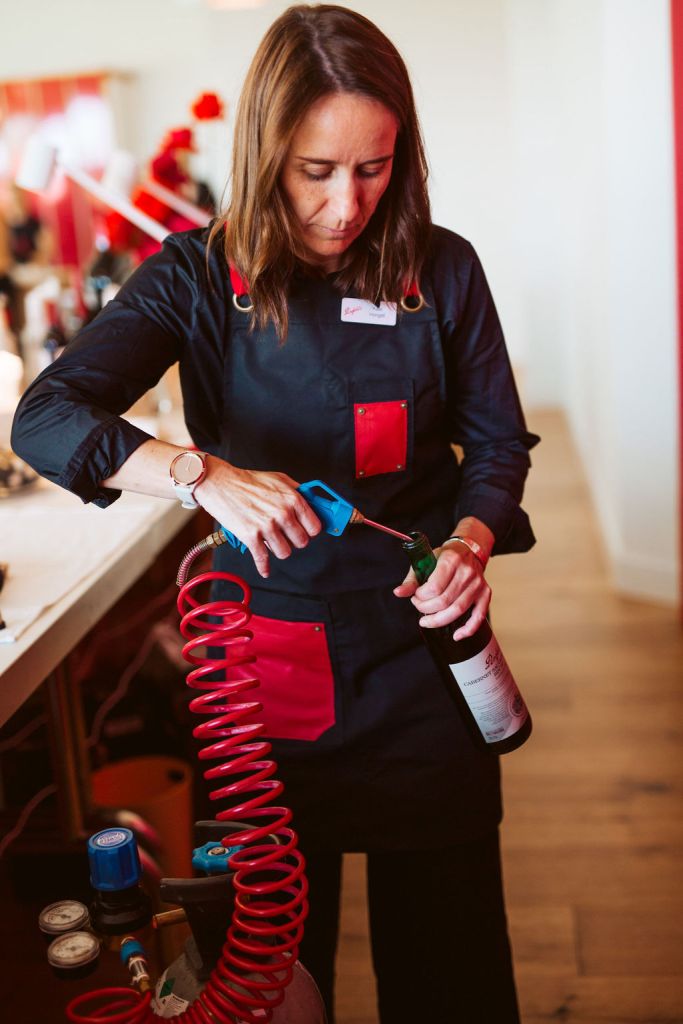In 1981 when Penfolds released its 1976 Grange, it was the first time an Australian red wine was priced at more than $20 a bottle. Fast forward to 2022 and each one is now worth thousands.

Penfolds chief winemaker, Peter Gago, remembers in 1981 when the iconic wine brand released its 1976 Grange. It was the first time an Australian red wine was priced at more than $20 a bottle, and people thought the company had “lost the plot” and that “nobody would pay that amount for an Australian red wine”. Fast forward to 2022 and the bottles are worth thousands.
Gago – who has been with the world-renowned wine brand since 1989 and chief winemaker and custodian of the brand since 2002 – managed to secure a few bottles of the ’76 vintage, but he wishes he had the foresight to buy “a lot more”. The same, he says, could be said of Penfold’s highly anticipated 2018 Grange, which was released in August at the slightly higher price tag of $1,000 a bottle. The vintage, Grange’s 68th consecutive annual release – has already received six perfect 100 point scores from wine critics.
“We’re looking at the price of Grange today, thinking ‘gee $1,000 a bottle!’ But in 20 years’ time we’ll say: ‘why didn’t we buy four cases rather than 6 bottles? It was only $1,000 a bottle’. It sounds a bit arrogant, but I can remember the story of the ’76 Grange well,” he says.
Gago is used to dealing with expensive wines. Speaking with Forbes Australia at a Penfold’s re-corking clinic – Gago explained that some vintages of Grange from the 1950s sell upwards of $130,000 a bottle.
Wine collectors and investors attend re-corking events to meet with Penfolds winemakers, where they can do everything from have their collections valued, to having them professionally re-corked. The bottles are so highly valued that there is an option to have the original cork placed in clear resin to retain as a keepsake when it is replaced.

Gago explains that at Penfolds – which began as a family-owned vineyard in South Australia in 1844 and is now owned by the ASX-listed company, Treasury Wine Estates – has always devoted the best of what it has to its Grange, which ensures the high quality of the wine.
“What goes into Grange, for us, is the best of the best that we can source. The best of grapes, best of barrels, the hands and white glove treatment all the way through the process. In a given year … it’s not so much what goes into the blend, it’s what you take out of it before you put everything together.
A huge amount of planning goes into each Grange vintage. Unlike its other wines, such a Magill Estate Shiraz which is made from grapes sourced from the original Penfold’s estate vineyards – grapes can be sourced from anywhere. “Grange you have too much choice, but it has to be at that [premium] level.”
Because viticulture is, in essence, a subsector of agriculture, some vintages are more rare than others. In 2000, for example, Penfolds produced less than a quarter of the average quantity of Grange. After tough conditions in 2011, it made less than a half of the volume of its Grange from that vintage.
“It wasn’t deliberate, but rather to get that level of quality, or above. In over 70 years we have never compromised. Because we’re still allowed to make those decisions. The wines come first and that’s why after a third of a century, I am still here.”
What are Gago’s favourite Grange vintages?
Un-hesitantly, Gago says his favourite Grange vintage is 1953, closely followed by the 1952. His third favourite is 1971, followed by 1955, then 1962 and 1963. Then you go into some of the newer vintages, which are good.
“The ’52 and ’53 are still getting 100 point scores, but there are so few of them that you don’t see many of them. You see a few more of the ’55,” he says. “But in recent times, the 2010 takes a lot of beating. The 2018 – only released in August – has already had six 100 point scores.”
“People say: ‘what’s so good about the [2018] vintage?’ and I say, if you look at the 1990 vintage – where it won red wine of the year for the planet – I sort of think ‘oh, nothing went wrong!’ That’s essentially what happened in 2018 too.”
It is becoming more difficult to rely on mother nature for a good vintage, especially with changing weather patterns and the impact of climate change. That is one of the reasons Penfolds has expanded its operations to France and the US, including its recent acquisition of Chateau Lanessan, one of the oldest estates in Bordeaux, France last month.
“It’s spreading risk as much as it is doing new and different things,” Gago said,
Where to invest?
While the traditionalists will always be drawn to Grange, Penfold’s notorious 707 has had a rockstar following in recent years – quite literally.
707 was notably the favourite wine of iconic music producer and founder of Mushroom Group, Michael Gudinski, who Gago admits “influenced many notable people”. Gudinski – whose love of the Penfold’s drop was so strong that his funeral was deliberately held at 7:07pm – most notably introduced singer Ed Sheeran to the wine, who then went on to mention it in his worldwide hit, Visiting Hours. The wine is regularly spotted in huge cannisters backstage at the shows of major music stars.
“That [influence] has spread,” Gago told Forbes Australia. “You know, I was a bit critical myself of the price increases of 707, but I admit I was wrong, because that wine hits the shelf, no dust gathered, and it’s gone.”
Penfold’s 707 currently retails for around $650 a bottle, but is “edging closer and closer” to Grange’s 2018 price of $1000 a bottle.
“There’s nobody who doesn’t like cabernet. Whereas shiraz tends to be for the cognisantee or whatever, cabernet is universally enjoyed. If you go to China or California, it’s cabernet, cabernet!”
Investors are also looking to “superblends” of Australian wines, according to Gago, which are essentially a blend of cabernet and shiraz grapes.
“What is a super blend? It sounds like an arrogant term – but you have super foods, in Italy you have super Tuscan red wines – the great Australian blend of cabernet sauvignon and shiraz we have taken to Grange, 707 level.”
Peter Gago’s 5 top tips for storing Grange
“People who have bought a bottle of Grange have made an investment, so it has to be stored correctly in optimal conditions,” Gago told Forbes Australia.
- Ideally at a temperature of 13 to 15 degrees Celsius, at a consistent temperature
- 80-plus per cent humidity
- No background odour, no vibrations
- Ideally a cellar is best
- If you live in an apartment, you can’t dig a cellar beneath the ground, but you can purchase a wine cabinet or store your wine at a wine storage facility, which are becoming more popular throughout Australia
